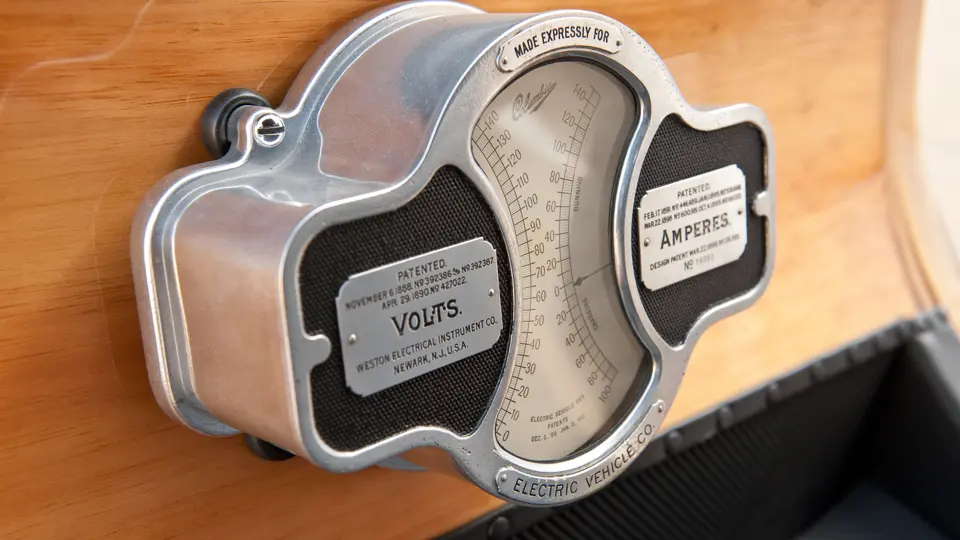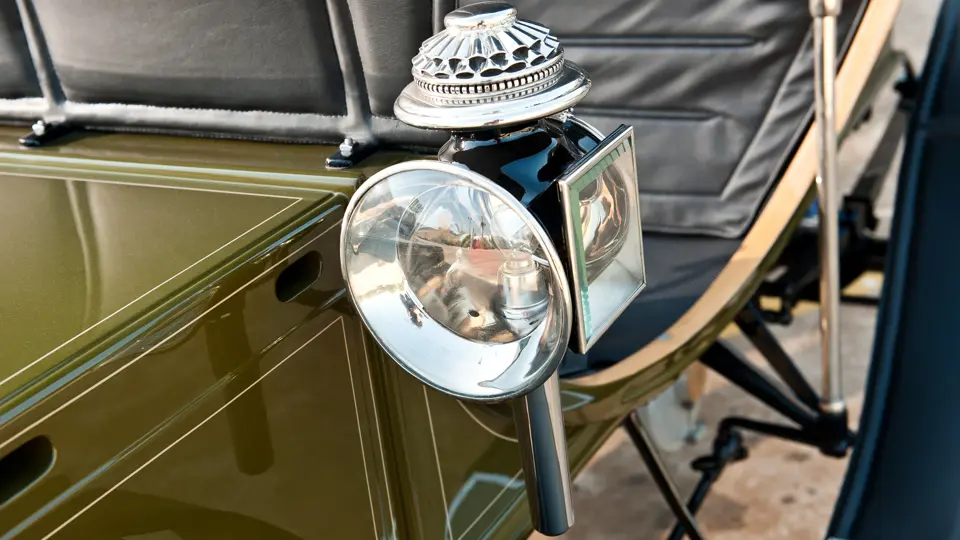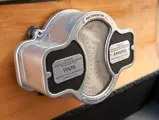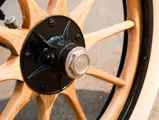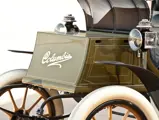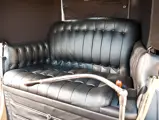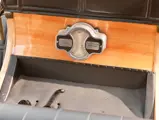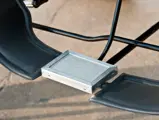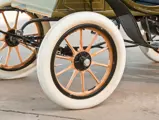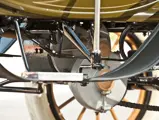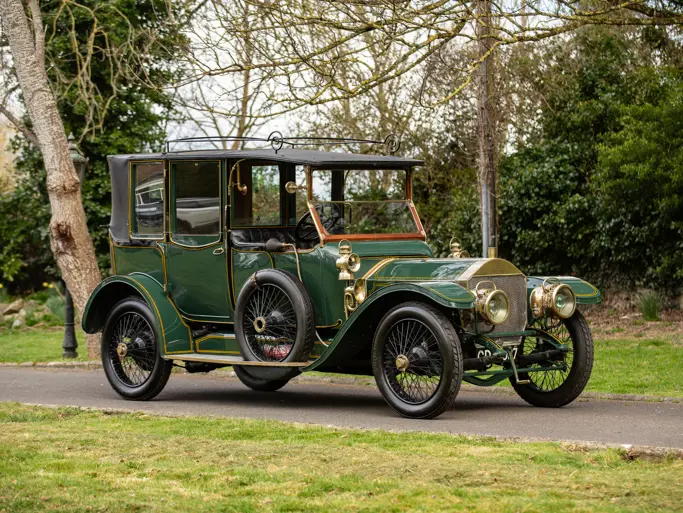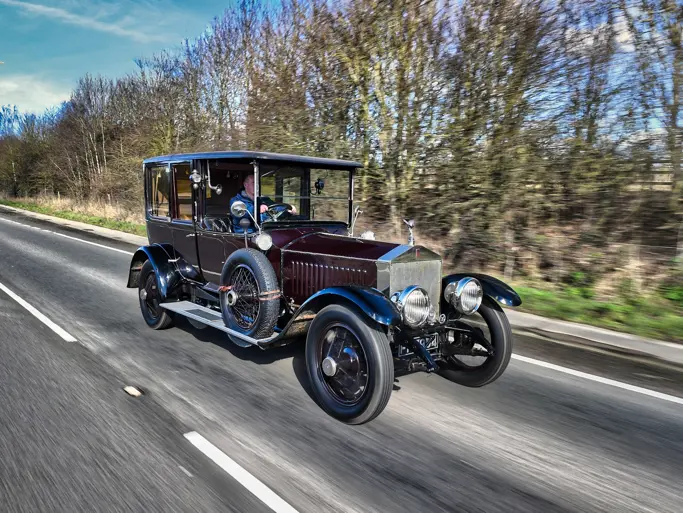Mark LXX. Direct-drive GE motor, solid front and rear axles with full-elliptic leaf springs, and two-wheel mechanical brakes. Wheelbase: 71.5"
• Offered from the Estate of John O’Quinn
• Formerly in the James Cousens Cedar Crossing Collection
• Delightful horseless carriage
Colonel Albert Pope had become the nation’s largest bicycle manufacturer, and he aimed to do the same with cars. In 1896, he completed an experimental electric car and the next year hired Hiram Percy Maxim to head the motor carriage department of the Pope Manufacturing Company in Hartford, Connecticut. By 1899, they had built several hundred more electrics under the Columbia name, which he also used for his bicycles.
Meanwhile, the Electric Vehicle Company had been started by Isaac L. Rice in New York City, with the intention of building electric taxicabs. Rice had managed to put several dozen in service, which performed quite well during the City’s blizzard of 1899. Financier William Collins Whitney took notice and bought the company. Whitney needed a manufacturing base, so he went to see Colonel Pope. The result was the Columbia Automobile Company of Hartford, organized in 1899.
By 1902, there were nine models of Columbia electrics, carrying such names as “Mark XXXI Elberon Victoria” and “Mark XXX Seabright Runabout,” as well as a single Mark VIII gasoline runabout. In contrast, the Mark LXX electric, offered from 1908 to 1911, was called simply “Victoria Phaeton.”
Purchased from the James Cousens Cedar Crossing Collection in 2008, this Mark LXVIII Columbia Victoria is a rare survivor from the first generation of United States electric automobiles. Complete but well worn as acquired, Cousens subjected the car to a complete nut-and-bolt restoration. Handsome in Brewster Green with black leather upholstery and top, it is elegant yet understated, with lighting trimmed in nickel and all-white rubber tires.
Please note this vehicle is being sold on a Bill of Sale only.


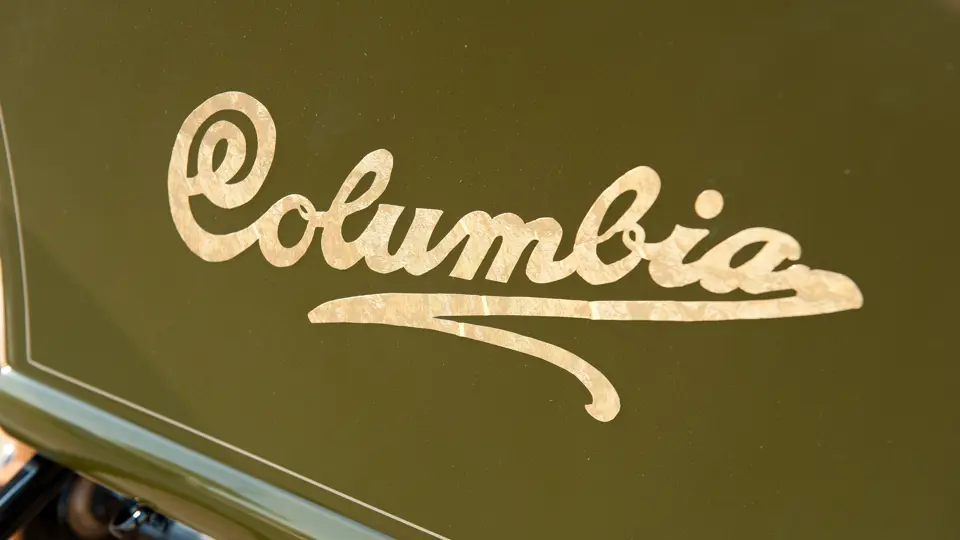

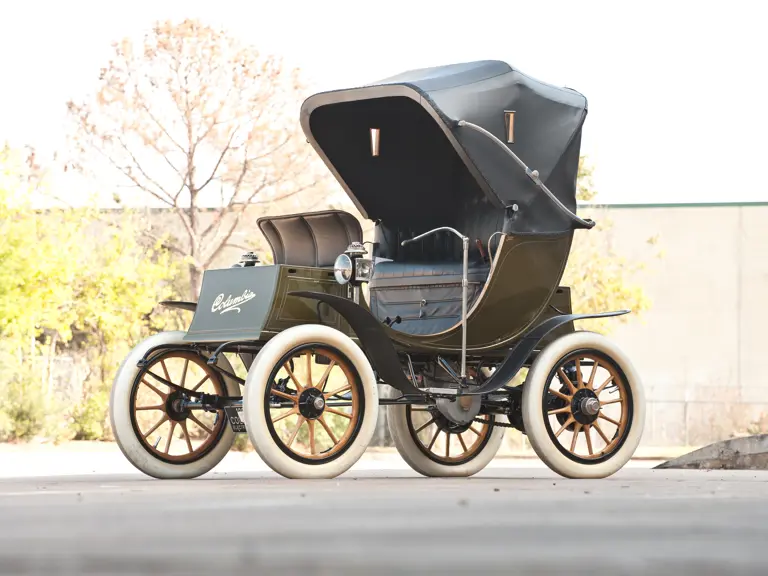
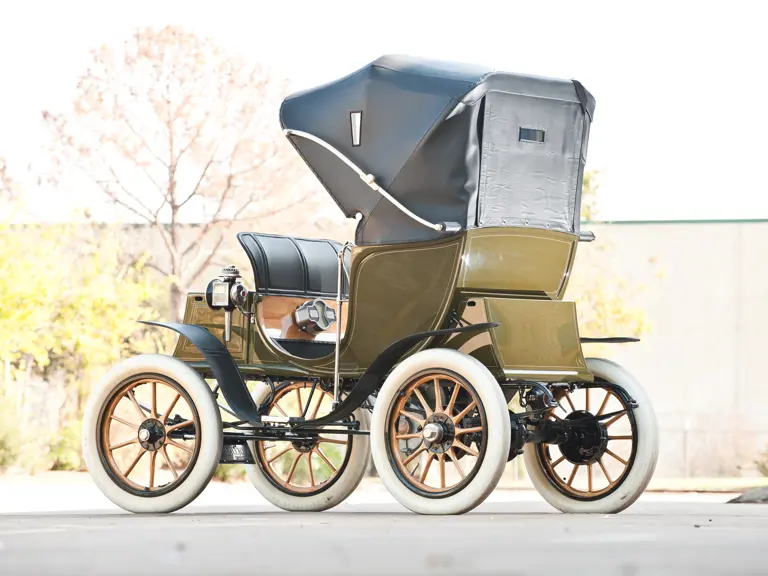

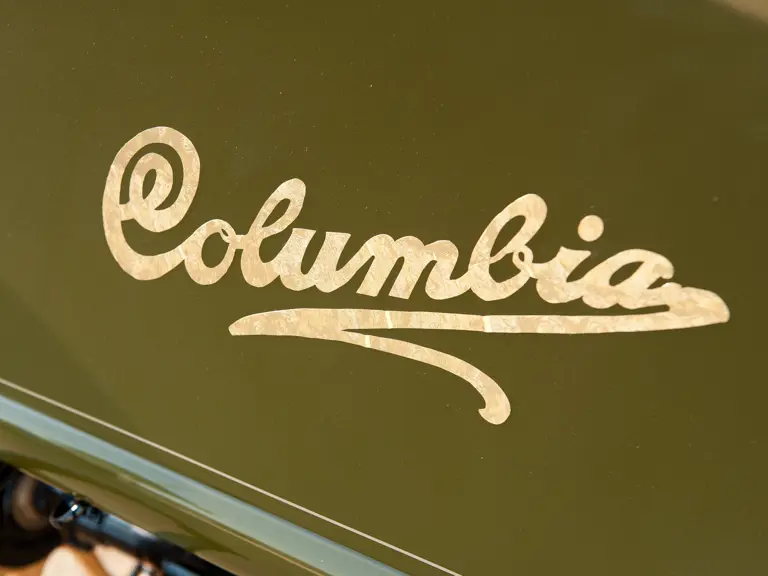
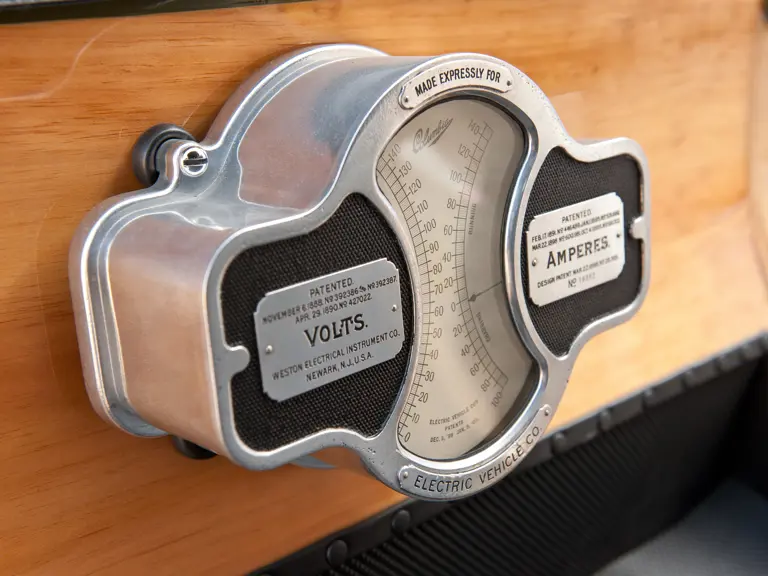
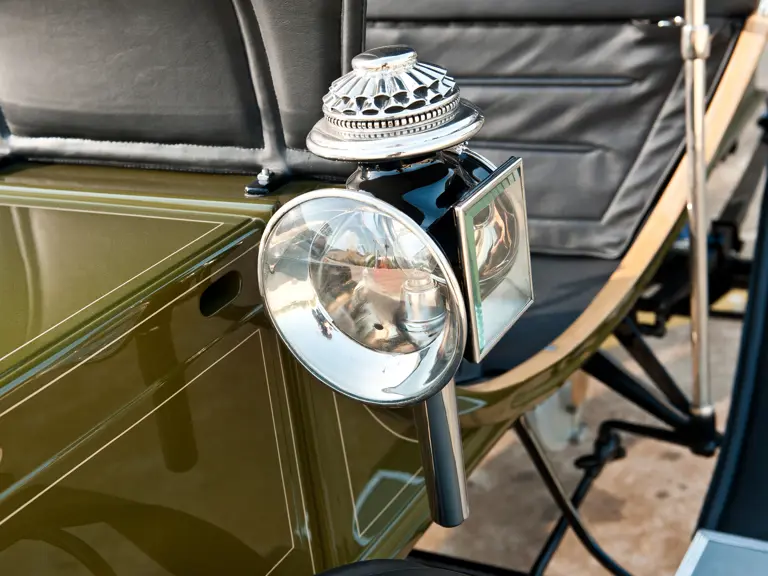

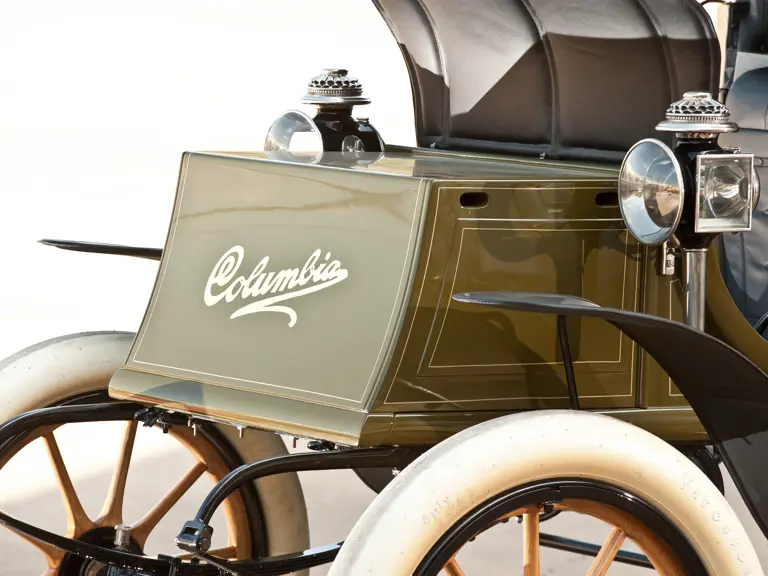
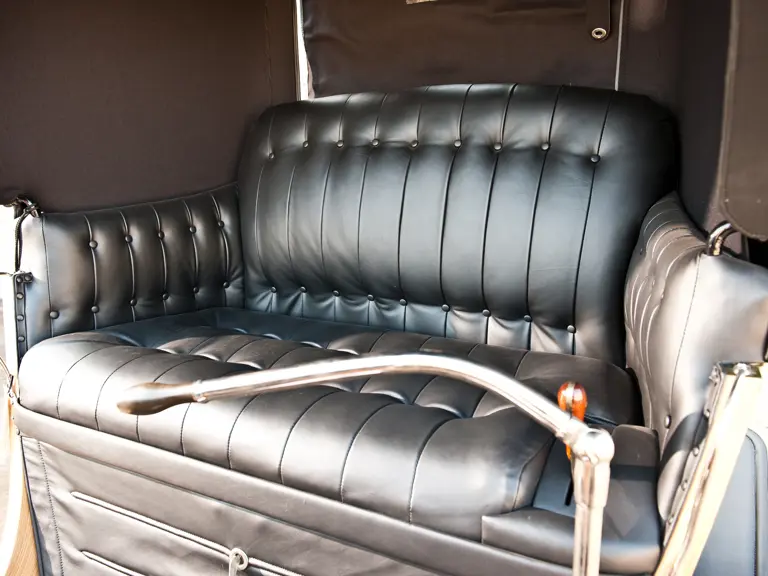
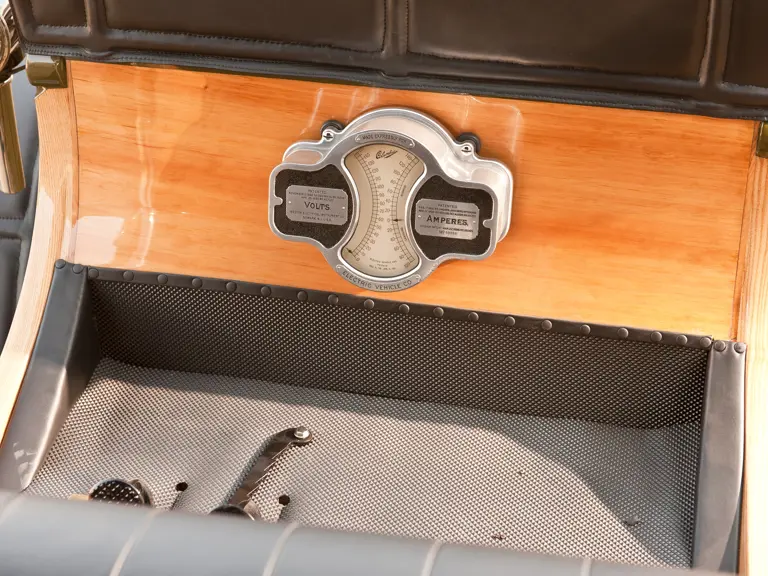

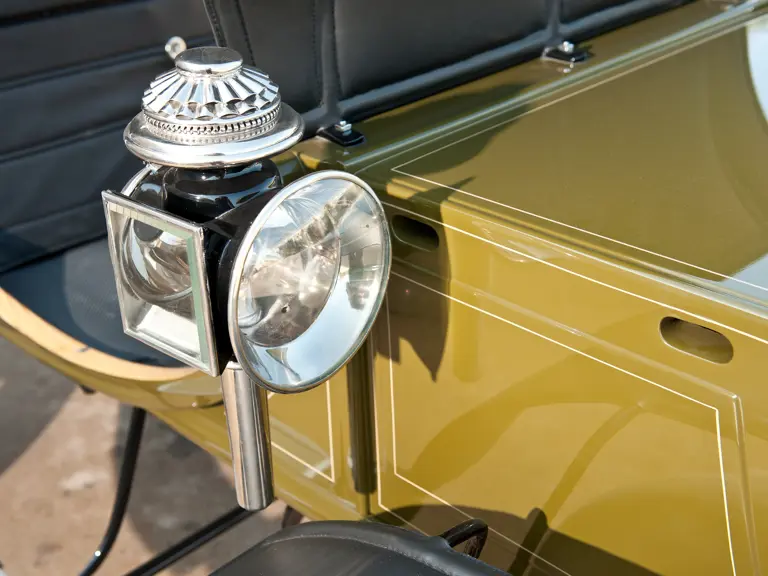
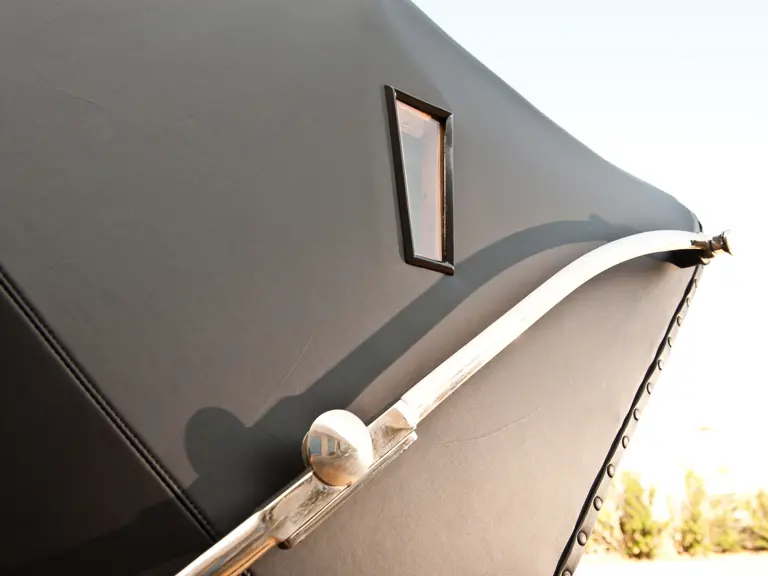
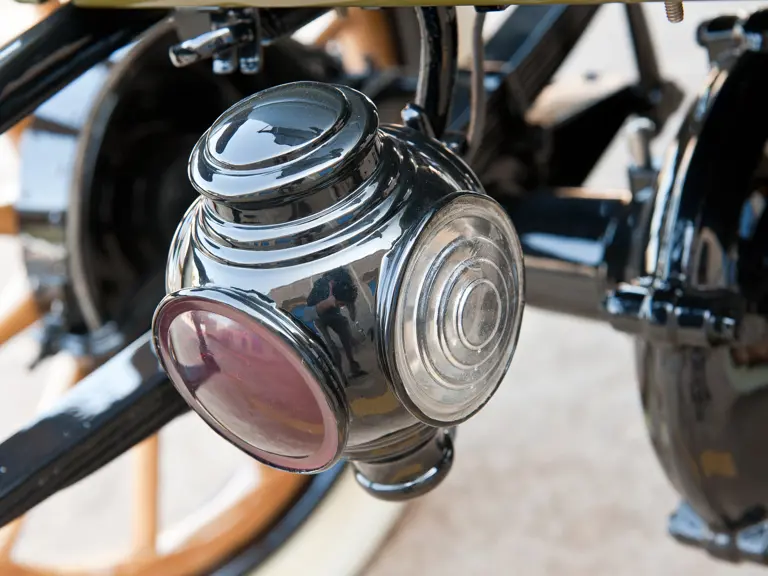
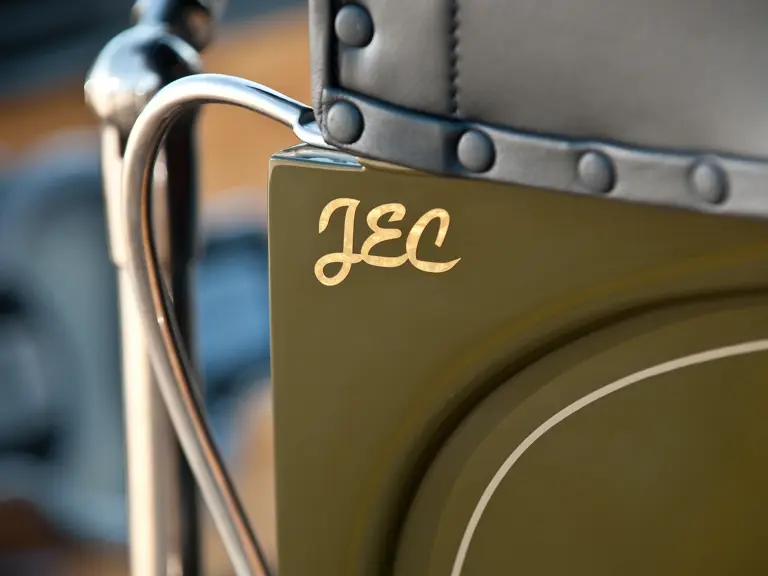
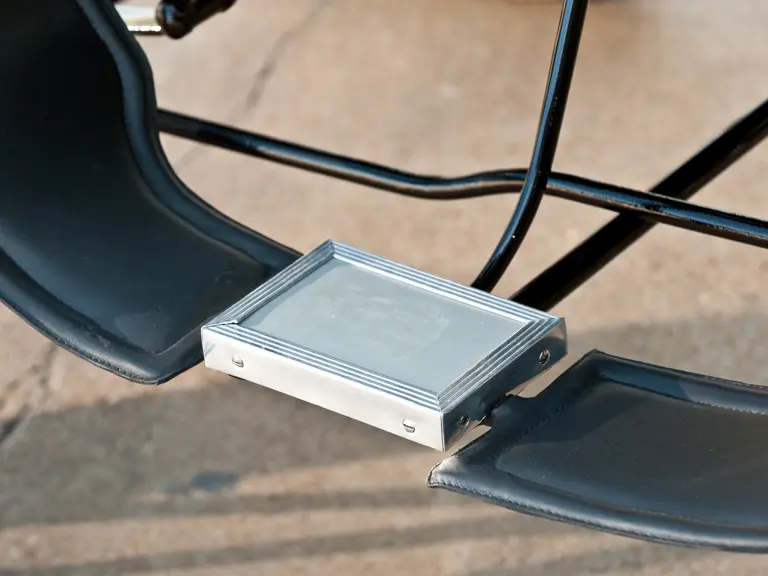



 | Amelia Island, Florida
| Amelia Island, Florida
